 EN
EN
 PT
PT
Activities to learn the characteristics, structure and characters of the fairy tale genre
Product: Book
ISBN: 9788859026341
Publication date: 01/09/2021
Suitable for: Primary 2nd level (ages 8-10)
REQUEST A SAMPLE OR MORE INFORMATION
Smart Poster – At fairytale school designed to accompany boys and girls in the discovery of the fairytale genre and learn to read the structure of fairy tales and create new ones. It makes the vertical space of the classroom walls the fulcrum of physical movement, didactic action, play and reflection, expanding the possibilities that the horizontal space of the classroom already makes available to the school.
The book
The numerous activities proposed in At fairytale school are organized by increasing difficulty and guarantee the progressive consolidation and enhancement of knowledge of the fundamental elements of the fairy tale. The volume is structured in three parts. The introduction offers a theoretical overview of the world of fairy tales and some teaching methods used to involve, entertain and practice with pupils. The presentation of the materials analyzes all the tools necessary for carrying out the activities. The last part of the text offers a guide to the activities to be carried out in the classroom.
The poster
The poster is structured with infographic elements that allow a new visual approach to the genre of the fairy tale. The upper part of the poster is dedicated to the hero’s climb instead of the classic winding path, a metaphor for the difficult and tiring journey of the hero through the pitfalls of the fairy tale. In the poster, a central perspective is proposed that the castle as its focal point, the ideal destination for the protagonist. The path to follow is a ladder to climb, where each step is characterized by a different colour: green represents the relaxed and countryside situation typical of the beginning of fairy tales; red breaks the initial equilibrium with its upset by introducing the antagonist; orange characterizes the phase relating to the tests that the hero must pass; finally blue denotes the return to peace and quiet and the arrival at the happy ending. Along the way there are the envelopes containing the cards that represent the various components of the fairy tale.
The SMART POSTER line
Erickson’s new editorial line SMART POSTER is aimed at all scholastic levels, from kindergarten and up, to make a static tool like a poster into something active. Each Smart Poster consists of a real poster and a volume of workshop activities that the teacher can carry out as group or individual activities. A collaborative and inclusive teaching tool that favors participation, cooperative and metacognitive activity that develops in the classroom spaces, between the desk and the walls.
A book
An active poster
6 main activities and operational cues
14 didactic worksheets on specific topics
2 infographics (a histogram and 8 flashcards)
92 play cards
2 dices

Activities to learn the characteristics, structure and characters of the fairy tale genre
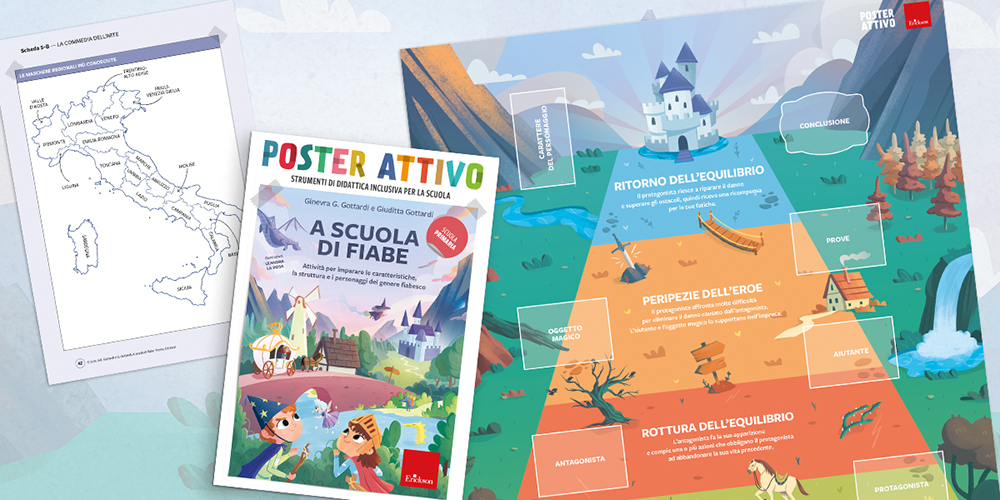
At fairytale school uses modern didactic tools to help boys and girls discover the fairy tale genre. The numerous activities proposed present increasing difficulty and guarantee the progressive consolidation and reinforcement of knowledge of the fundamental elements of fairy tales. Both the group and individual work reinforce active listening and reading strategies, enhance expository skills and encourage the use of critical thinking and creativity. Moreover, the search for creative solutions to transform known texts into original narrative ones increases the lexical compentece.
THE MATERIALS
THE POSTER
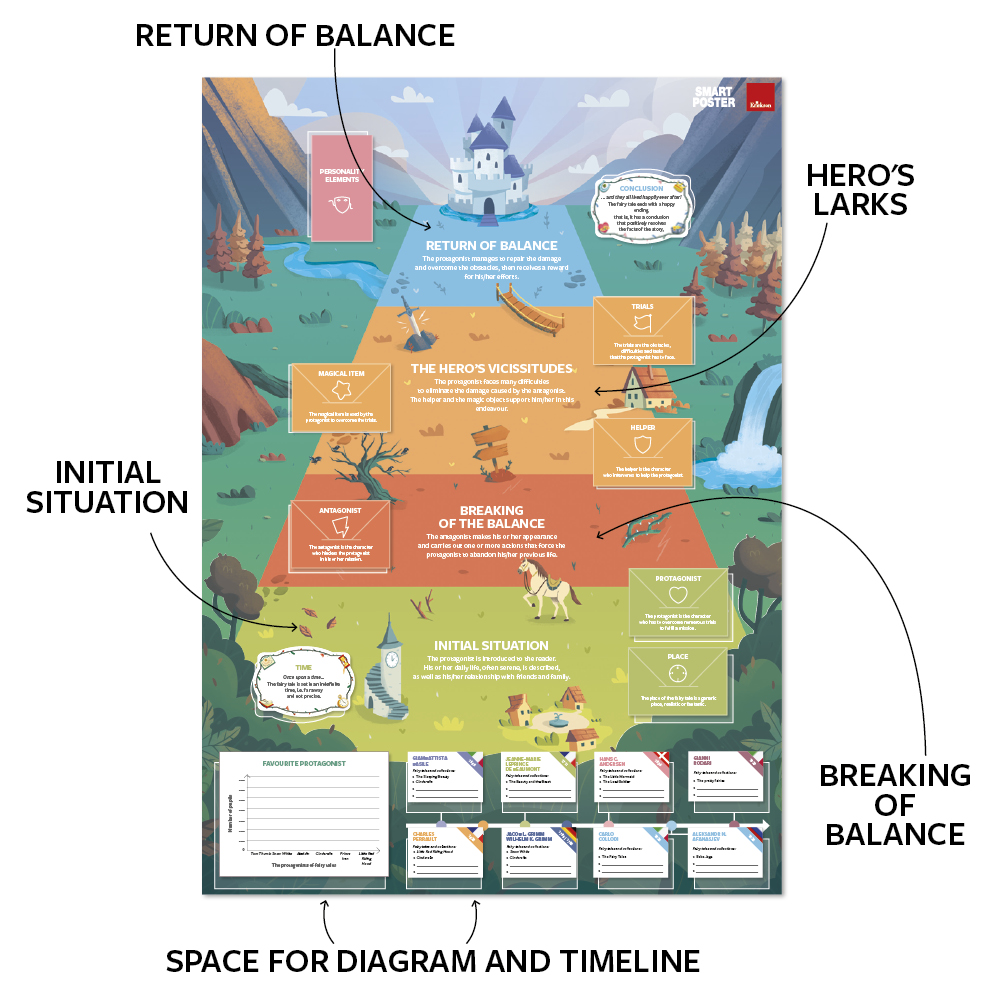
The poster shows the different phases of each fairy tale that the hero has to go through to reach the happy ending. The path has the form of a pyramid with its focal point in the castle, that is the hero's ideal destiny.
Each step in the path is characterised by a different colour: in light green the initial, relaxed situation; red represents what violently breaks the initial balance; orange characterises the phase relating to the trials that the hero must overcome; the final blue denotes the return to tranquillity and the arrival at the happy ending.
The lower part of the poster shows two infographic elements: the graph relating to the fairy tale survey on the left; on the right, the timeline to be completed with some of the most famous fairytale authors.
THE ELEMENTS OF THE FAIRY TALE
The hero's pyramidal journey has nine empty squares to be filled in with:
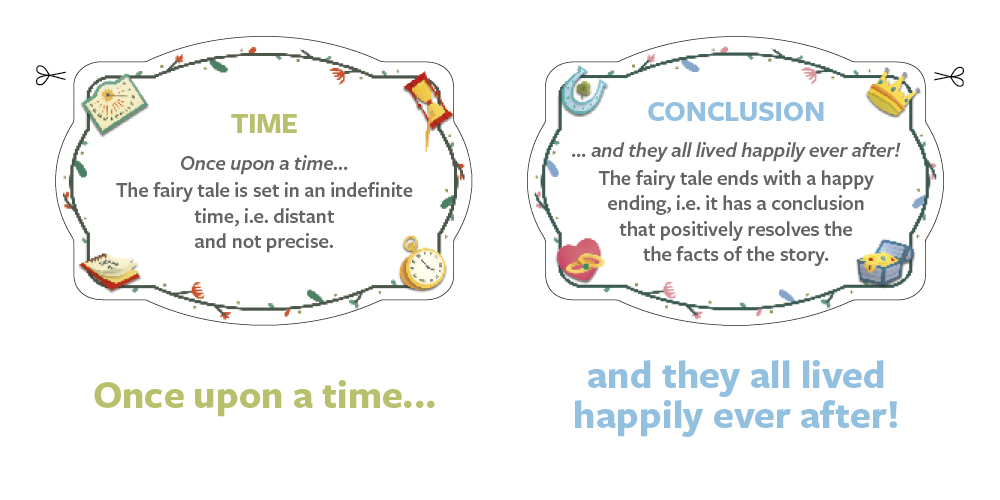
two cards, placed at the beginning and at the end of the journey, representing time and conclusion with the classic opening and closing phrases of the fairy tale
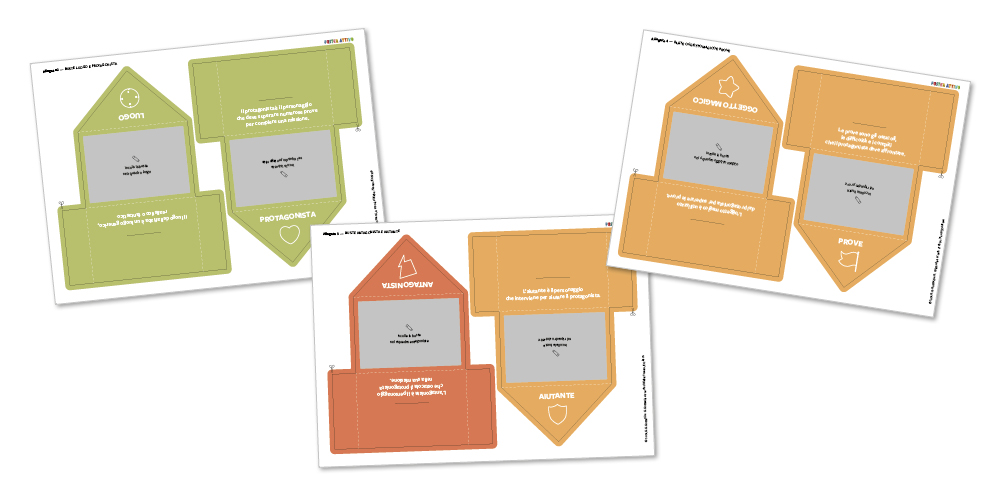
seven envelopes, identified by a specific icon, to be glued on the poster
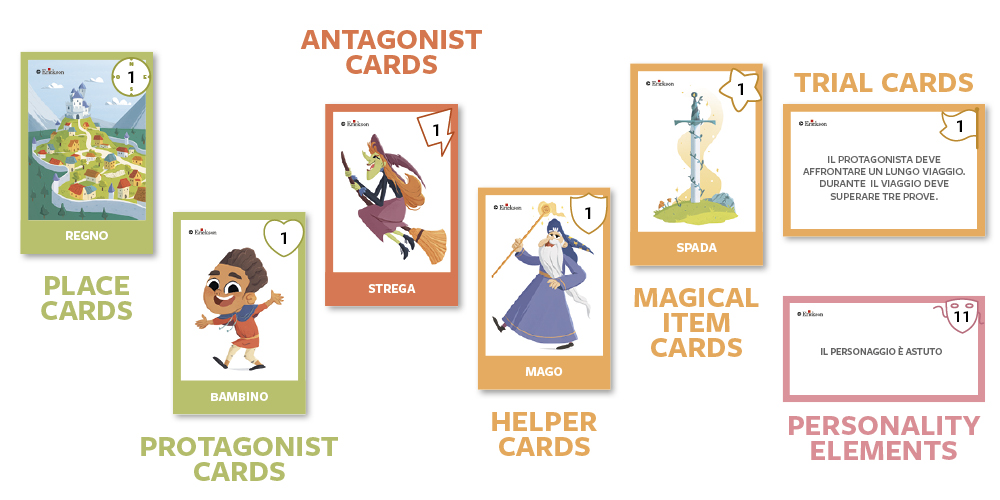
the corresponding cards relating to place, protagonist, personality elements, antagonist, helper, magical items and trials have to be cut out and places inside the envelopes.
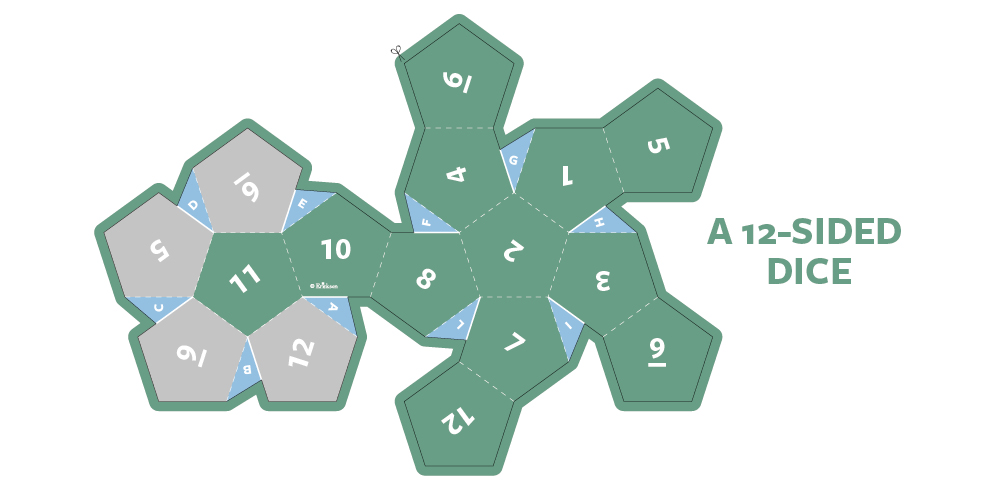
To complete the materials of the hero's climb, a 12-sided dice has to be constructed.
THE TIME LINE AND THE GRAPHIC
On the time line, eight empty squares will host the cards of the main fairytale authors, in chronological order. Each card lists their name, date of birth, the flag of their country of origin and some of the main stories they wrote.
A histogram on the left will show the results of a survey, conducted in the whole school, about the favourite protagonist of all fairy tales.
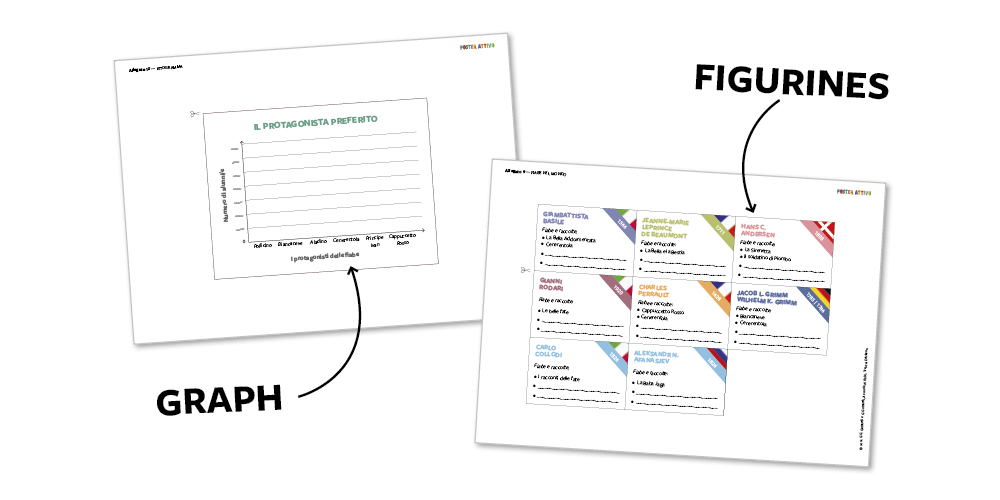
Leaf through some pages from the book for Smart Poster – At Fairytale School which have been translated into English to facilitate your evaluation of the product.
THE SERIES
SMART POSTER is a new editorial series by Erickson aimed at all school grades, a collaborative and inclusive teaching tool that aims to encourage participatory, cooperative and metacognitive activity within the classroom, between the desk and the walls. Each SMART POSTER consists of a poster and a volume of workshop activities that the teacher will manage as group or individual activities. With the SMART POSTER, pupils will be able to play, discuss, make decisions, build content, organize and retrieve important information, and monitor their learning process with a view to self-assessment.